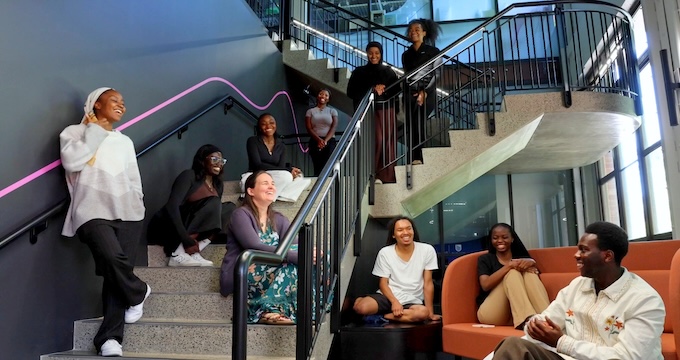Few Asian students choose to become teachers.
This is a lost opportunity to bridge the current diversity gap in the teaching workforce and a lost opportunity to address the concerning national teacher shortage. Ethnic minorities, including Asians, are caught in a vicious cycle of underrepresentation, where small numbers of existing ethnic minority teachers in Australia equates to difficulty attracting new ethnic minority teachers.
Asians are the fastest-growing ethnic group in Australia. They make up about one in six of the overall population. We don’t have specific data for Asian teachers and students but we know teachers from minority backgrounds, including Asians, account for only 4% of the P-12 teaching workforce in 2022. We also know there is increasing student racial diversity in schools. The result is a widening teacher-student racial parity gap.
Research has consistently captured the benefits of teacher-student racial-cultural-linguistic alignment. For instance, scholarship demonstrates a racially diverse teacher workforce contributes to minority student perceptions of schools as more welcoming places. It allows minority teachers to bring their own understanding of relevant cultural contexts, while also acting as role models for students from non-dominant backgrounds.
Raising expectations
They may also enhance broader cultural awareness, diversify worldviews, raise expectations and tackle negative minority student stereotypes.
Research shows that they are crucial in supporting student well-being, especially among academically vulnerable minority students. Minority teachers are instrumental in providing an equitable and inclusive education, ensuring that students from diverse backgrounds can have their needs and voices heard and understood in their schools.
Similar considerations apply to Asian students and teachers in Australia. For instance, many Asian students tend to be seen as a culturally homogeneous whole, and are consequently (unfairly) held to a one-size-fits-all expectation around linguistic ability and academic performance.
These students often grapple with racial bias, discrimination, and lack of belonging in Australian schools.
But Asian teachers can leverage cultural knowledge and community connections to support Asian students. They can also debunk stereotypes among non-Asian students and educate non-Asian colleagues. While we are not suggesting that Asian teachers represent a distinct typology of educators or that racial matching is always necessary, research has shown us that educators who understand the cultural and social dynamics that shape their students’ lives are best positioned to support their learning. Asian teachers help challenge current dominant white and monolingual racial stereotypes of teaching, thereby encouraging more Asian students to aspire to become teachers.
There are a range of personal, cultural and structural barriers that contribute to this Asian underrepresentation in teaching. At the personal level, (racial) marginalisation in schools is still prevalent and causes minority students more broadly to perceive that the teaching profession is not for them.
Impacts on belonging and safety
Student experiences of racism and discrimination impact a sense of belonging and safety. That’s been a barrier to wanting to work in schools. Those memories of being belittled by school staff cause negative self-concept and lower minority students’ confidence in future teaching abilities.
Cultural and parental influences can also discourage Asian youth from choosing teaching in favour of securing employment in high-status, and high-salary careers. Many Asian students come from families who have internalised the racially-driven ‘model minority’ status. They often face significant familial pressure that emphasises high academic achievement as a stepping stone to employability and financial security. Asian parents may encourage their children to focus on prestigious and high-paying jobs as a protective factor from discrimination in a white-dominated labour market.
Negative experiences within teacher education programs have led to premature attrition of minority preservice teachers. These include racism, marginalisation and negative stereotyping, leading to a feeling of not belonging. There are some underlying sources of bias that favour white preservice teachers, including privileging Western-centric views over minority knowledge and perspectives in teacher education curriculum. Moreover, studies have shown that minority preservice teachers are confronted with a disproportionate amount of race-related structural and institutional challenges in initial teacher education.
What we must do next
Some recommendations include increasing the number of minority teacher educators and creating an inclusive teacher preparation curriculum that reflects diversity to help attract and retain minority teacher candidates. Of course, this needs to first be grounded in formalised antiracist agendas within teacher education programs and at the institutional level. Similarly, beyond higher education, schools need to nip this problem in the bud by adopting a similar antiracist approach. Here, collective and coordinated support from school leadership, staff, and broader school communities is essential in rejecting racism and discrimination against Asian students and teachers.
Australian education research has remained relatively silent on Asian Australia despite the growing presence – and increasing importance – of Asian teacher and student populations alike. A growing body of scholarship is interrogating the racial-colonial discourses that impact this key stakeholder in Australian education.
Given the clear implications this discussion has for teacher attraction and retention as a means to improved (racial) equity in schools and higher education spaces, we contend that there is much that urgently needs to be done in this space.

Aaron Teo is a lecturer in curriculum and pedagogy at the University of Southern Queensland’s School of Education. He is convenor for the Australian Association for Research in Education Social Justice Special Interest Group. His research focusses on the raced and gendered subjectivities of migrant teachers from “Asian” backgrounds in the Australian context, as well as critical pedagogies in white Australian (university and school) classroom spaces.

Sun Yee Yip is a lecturer at the Faculty of Education at Monash University. Her research focuses on teacher knowledge development, teacher diversity and raising the status of teachers and the teaching profession.











